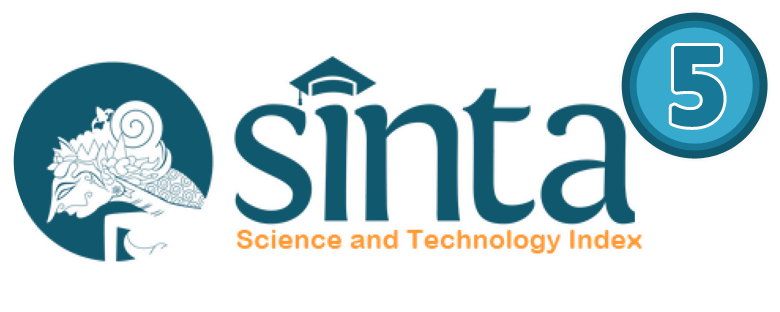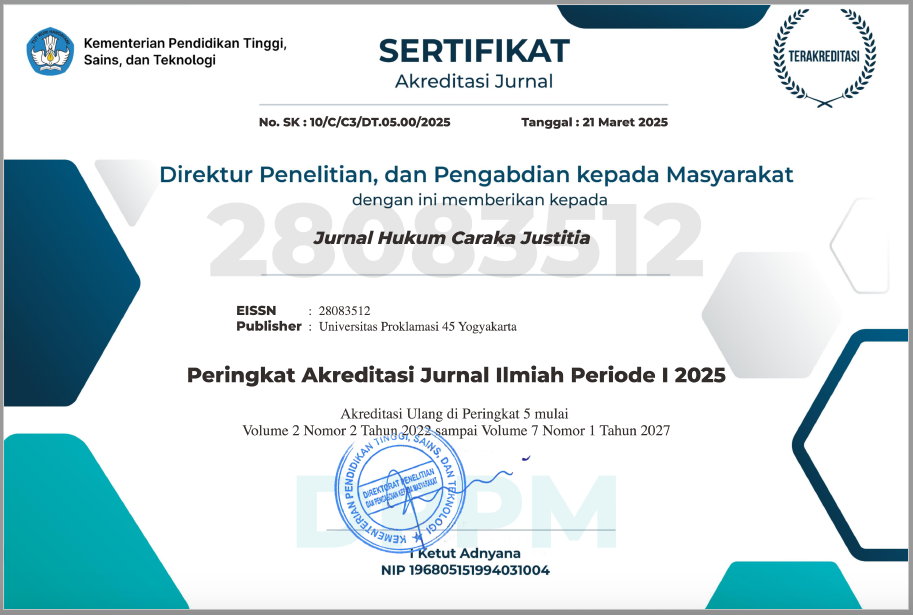Upaya Administratif Pembebasan Jabatan Paska Berlakunya UU Nomor 30 Tahun 2014 Tentang Administrasi Pemerintahan
Studi Kasus Perkara Nomor 23/G/2020/PTUN-Jkt
DOI:
https://doi.org/10.30588/jhcj.v1i2.918Keywords:
Administrative Measures, Personnel Disputes, Release from PositionsAbstract
Law Number 30 of 2014 concerning Government Administration (UU AP) as an instrument in realizing the principles of good governance to increase public trust is not flawless, in its application, it can lead to legal uncertainty and even lead to injustice especially for the State Civil Apparatus (ASN) who was sentenced to disciplinary release from office.
This research is juridical-normative research that is descriptive-analytical with a case approach, historical approach, and conceptual approach to answering how the administrative measures for exemption from ASN positions under the Statutory Regulations and Invitations and how the regulatory implications are intended for legal protection and justice for ASN.
The results of the research show that the Administrative Efforts in the AP Law and Law Number 5 of 2014 concerning ASN (UU ASN) cause conflicting norms that resulting confusion and emptiness of the law for ASN who are sentenced to disciplinary Exemption from Position due to Article 33 Government Regulation Number 53 of 2010 concerning Discipline Civil Servants, disciplinary punishment is set to not be submitted administrative efforts.
The condition is eliminating legal protection for ASN in obtaining certainty and justice. Suggestions from this research need to be immediately issued a new Government Regulation in accordance with the mandate of Article 129 paragraph (5) UU ASN whose arrangements are harmonized with Administrative Efforts in the Government Administration Act.
References
Artikel Jurnal
Hartini, Sri. “Upaya Keberatan Yang Dijatuhi Hukuman Pemberhentian Tindak Dengan Hormat”. Jurnal Dinamika Hukum 11, no. 2 (Mei 2011).
Marbun, Robinsar. “Transformasi Upaya Administratif Dalam Penyelesaian Sengketa Kepegawaian”. Jurnal Yuridis 4, no. 2 (Desember 2017).
Marzuki, H.M. Laica. “Penggunaan Upaya Administratif Dalam Sengketa Tata Usaha Negara”. Jurnal Hukum dan Pembangunan 22, no. 2 (1992).
Salmon, Hendrik. “Eksistensi Peradilan Tata Usaha Negara (PTUN) dalam Mewujudkan Suatu Pemerintahan yang Baik”. Jurnal Sasi 16, no. 4 (Oktober-Desember 2010).
Sudiarawan, Kadek A, & Bagus Hermanto. “Rekonstruksi Pergeseran Paradigma Upaya Administratif Dalam Penyelesaian Sengketa Prapemilihan Kepala Daerah”. Jurnal Legislasi Indonesia 16, no. 3 (September 2019).
Buku
Huda, Ni’matul. Ketatanegaraan Indonesia Dalam Putusan Mahkamah Konstitusi. Yogyakarta: UII Press. 2011.
Indroharto. Usaha Memahami Undang-Undang tentang Peradilan Tata Usaha Negara. Jakarta: Pustaka Sinar Harapan, 1991.
Lotulung, Paulus Efendie. Beberapa Sistem tentang Kontrol Segi Hukum terhadap Pemerintah. Jakarta: PT. Bhuana Ilmu Populer, 1985.
Lumbun, Ronald S. PERMA RI Wujud Kerancuan Antara Praktik Pembagian dan Pemisahan Kekuasaan. Jakarta: Raja Grafindo Persada, 2011.
Marzuki, Peter Mahmud. Penelitian Hukum. Jakarta: Kencana. 2013.
Nugraha, Safri, dkk. Hukum Administrasi Negara. Jakarta: BPFH UI, 2005.
R.Wiyono. Hukum Peradilan Tata Usaha Negara. Jakarta: Sinar Grafika. 2005.
Sirajudin & Winardi. Dasar-Dasar Hukum Tata Negara Indonesia. Malang: Setara Press, 2015.
Soekanto, Soerjono, & Sri Mamudji. Penelitian Hukum Normatif: Suatu Tinjauan Singkat. Jakarta: Raja Grafindo Persada, 2015.
Hasil Penelitian
Tim Peneliti Lembaga Administrasi Negara. “Implementasi UU Nomor 30 Tahun 2014 Tentang Administrasi Pemerintahan Terkait Pemberantasan Korupsi”. Puslatbang KHAN, Aceh Besar, 2019.
Internet
Humas KEMENPANRB. “Sidang Badan Pertimbangan Kepegawaian (BAPEK)”. https://www.menpan.go.id/site/berita-foto/sidang-badan-pertimbangan-kepegawaian-bapek (diakses 12 Mei 2020).
KBBI Online.”Dapat”. https://kbbi.web.id/dapat (diakses 30 Juni 2020).
Putusan Pengadilan
Putusan Pengadilan Tata Usaha Negara Jakarta Nomor 23/G/2020/PTUN-JKT perihal pembebasan jabatan, 17 Februari 2020.
Downloads
Published
How to Cite
Issue
Section
License
Copyright (c) 2021 Rory Alamsyah

This work is licensed under a Creative Commons Attribution 4.0 International License.
Authors who publish with JHCJ agree to the following terms:
Authors retain copyright and grant the JHCJ right of first publication with the work simultaneously licensed under a Creative Commons Attribution 4.0 International License that allows others to share (copy and redistribute the material in any medium or format) and adapt (remix, transform, and build upon the material) the work for any purpose, even commercially with an acknowledgment of the work's authorship and initial publication in JHCJ.
Authors are able to enter into separate, additional contractual arrangements for the non-exclusive distribution of the journal's published version of the work (e.g., post it to an institutional repository or publish it in a book), with an acknowledgment of its initial publication in JHCJ. Authors are permitted and encouraged to post their work online (e.g., in institutional repositories or on their website) prior to and during the submission process, as it can lead to productive exchanges, as well as earlier and greater citation of published work (See The Effect of Open Access).














